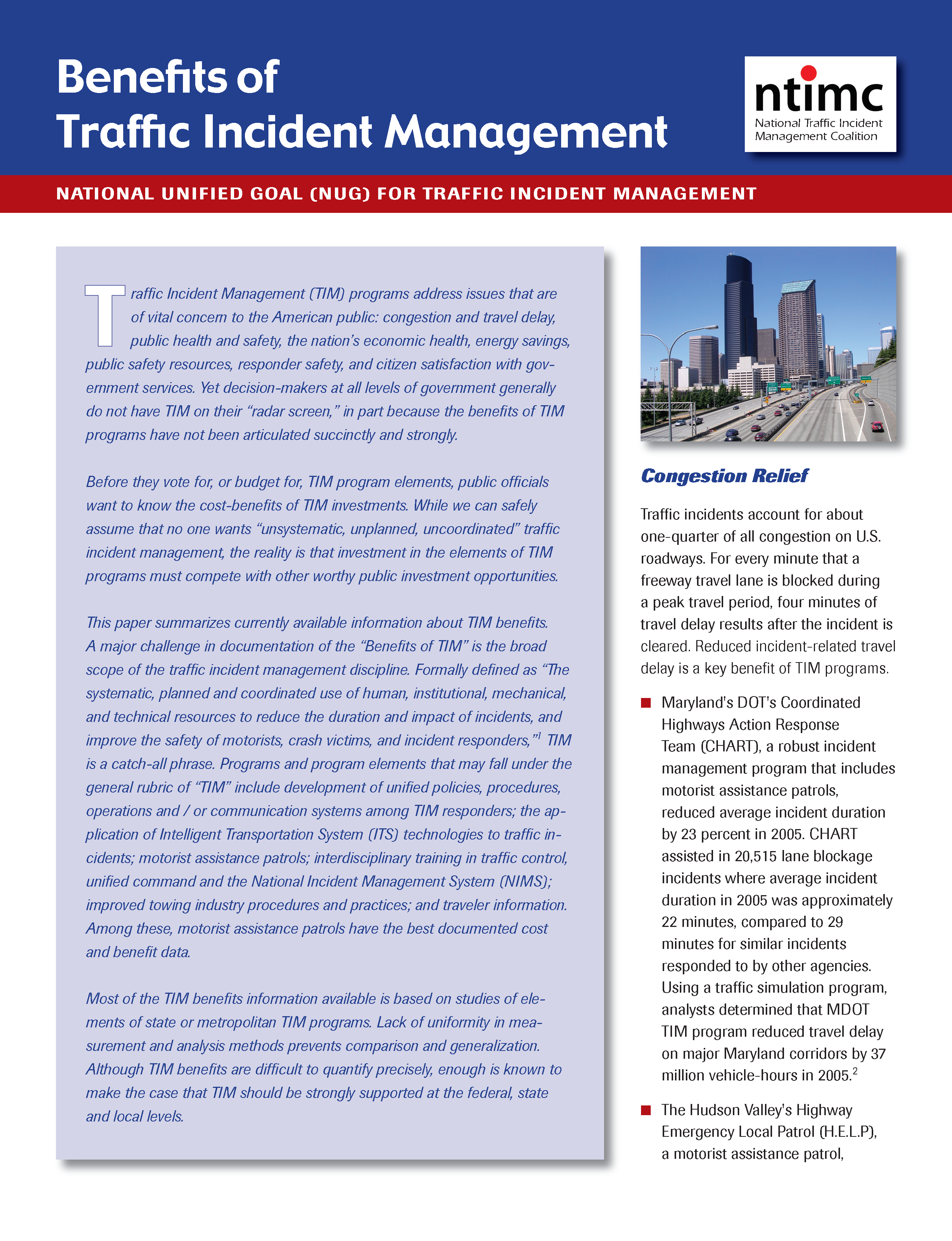Traffic Incident Management (TIM): Laws & Data
Traffic incident management (TIM) programs have consistently been faced with significant funding challenges. To help justify TIM programs, the benefits of these programs can be shown using the concept of performance measurement. Performance measurement for TIM programs can demonstrate program accountability, process efficiency, and improvements over time; improve communications amongst partners; and support future planning. In addition, Moving Ahead for Progress in the 21st Century Act (MAP-21) requires the establishment of a performance- and outcome-based program in which states invest resources in projects that collectively make progress toward the achievement of national performance goals. Read More >>
 NTIMC: Benefits of Traffic Incident Management
NTIMC: Benefits of Traffic Incident Management
Traffic Incident Management (TIM) programs address issues that are of vital concern to the American public: congestion and travel delay, public health and safety, the nation’s economic health, energy savings, public safety resources, responder safety, and citizen satisfaction with government services. Yet decision-makers at all levels of government generally do not have TIM on their “radar screen,” in part because the benefits of TIM programs have not been articulated succinctly and strongly. Read More >>



